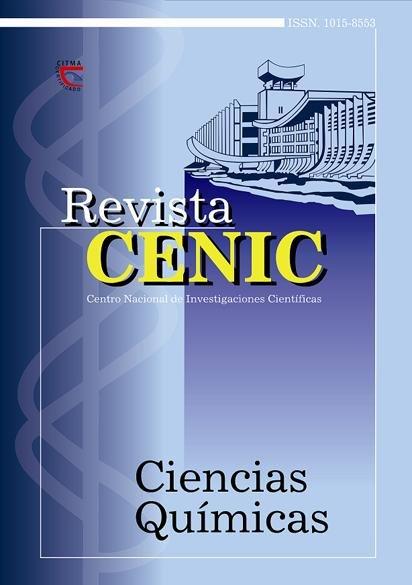Composite electrodes with metal matrix for the hydrogen evolution reaction
Abstract
The industrial and technological development reached by humanity has increased the consumption of energy, which comes mainly from non-renewable and very contaminating to levels which endanger global ecology. Because of this, different sources of alternative energy have been developing from renewable resources. The most promising one seems to be the electrolytic hydrogen, and with this in mind different electrodes are being developed at the moment, which allow the obtainment of this gas more favorably. The hydrogen evolution reaction (HER) on Ni/Al2O3 and Ni/ TiO2 composite electrodes in KOH 1 mol/L at room temperature using a quasi-steady polarization technique was studied. By electrolytic deposition of nickel and codeposition of Al2O3 or TiO2 with different particle size (f) the electrodes were obtained. The composition of the electrodes was determined by means of chemical analysis, and X-ray diffraction technique was used to study the structure of the deposits. Considerable quantities of oxide in the deposits can not be obtained by means of the method used to prepare the composite electrodes. This was confirmed by DRX technique. The values of io, b and E200 indicate better electrocatalytic activity for HER on the Ni/Al2O3 electrodes in respect of Ni electrodes, being greater for the former with Al2O3 < 32 mm and lower on the Ni/TiO2 electrodes. With regard to HER mechanism on the electrodes drawing any conclusions is not possible because some of them predict the same values of b.

Downloads
Published
How to Cite
Issue
Section
License
Copyright (c) 2001 Copyright (c) 2001 Revista CENIC Ciencias Químicas

This work is licensed under a Creative Commons Attribution-NonCommercial-ShareAlike 4.0 International License.
Los autores que publican en esta revista están de acuerdo con los siguientes términos:
Los autores conservan los derechos de autor y garantizan a la revista el derecho de ser la primera publicación del trabajo al igual que licenciado bajo una Creative Commons Atribución-NoComercial-CompartirIgual 4.0 que permite a otros compartir el trabajo con un reconocimiento de la autoría del trabajo y la publicación inicial en esta revista.
Los autores pueden establecer por separado acuerdos adicionales para la distribución no exclusiva de la versión de la obra publicada en la revista (por ejemplo, situarlo en un repositorio institucional o publicarlo en un libro), con un reconocimiento de su publicación inicial en esta revista.
Se permite y se anima a los autores a difundir sus trabajos electrónicamente (por ejemplo, en repositorios institucionales o en su propio sitio web) antes y durante el proceso de envío, ya que puede dar lugar a intercambios productivos, así como a una citación más temprana y mayor de los trabajos publicados (Véase The Effect of Open Access) (en inglés).













